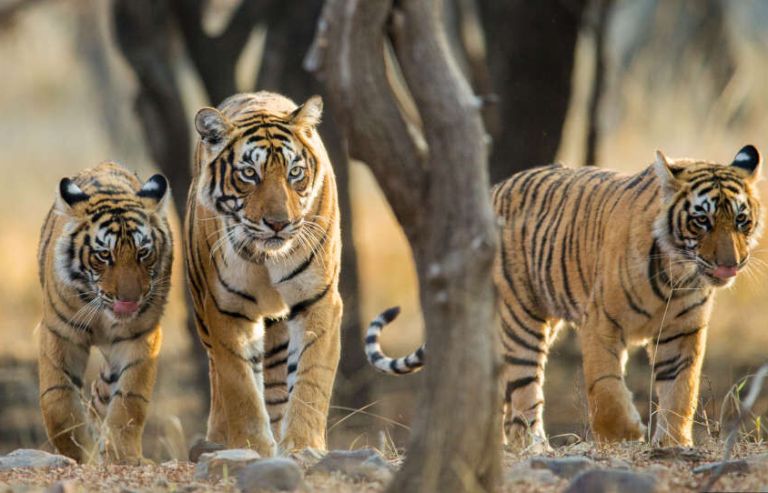
A new threat to wild tiger populations has surfaced in the form of a deadly virus. COURTESY
The world has lost a heavy amount of its tiger population since the beginning of the 20th century. The decline is attributed to illegal trade in tiger parts, hunting and habitat loss.
A new threat to wild tiger populations has surfaced in the form of a deadly virus. According to a recent study (2014) from the Wildlife Conservation Society (WCS), canine distemper virus (CDV) has the potential to be a significant driver in pushing the tigers towards extinction. While CDV has recently been shown to lead to the deaths of individual tigers, its long-term impacts on tiger populations had never before been studied, researchers said. Various diseases also take their toll silently on the wildlife, including the predators. Many animals die and there is no way to ascertain the cause of their death. There are certain diseases that spread like epidemic and play havoc. Diseases like Feline Panleucopania (highly contagious and can be fatal), tuberculosis, sarcosystis, etc. have led to the decimation of many animals including tigers. Health management of wildlife, a relatively new area, is totally neglected. There is an urgent need to incorporate this field in the area of wildlife conservation.
The key findings from many years of study of tiger population have indicated that in many sites, tigers decline in numbers because of habitat loss and prey depletion rather than being killed directly. A tiger needs to eat about 50 deer-sized animals or 6,600 pounds of living prey every year. Wherever prey-base is adequate and good protection measures are in place tiger populations reach high numbers simply because the species breeds quickly. Prey species itself depend on conditions of the habitat. 21 tiger reserves in India out of 28 had lost about 250 square km of forest from 1997 to 2002. In the outer surround (within 10km from periphery of a tiger reserve) forest cover declined over the same period by 124 sq km in the same reserves. Tigers typically survive in what scientists call meta-populations — a source population with breeding females living in dense patches of forests — surrounded by dispersing tigers making their way into not so well kept nearby forests. Now when both core and buffer zones are under pressure, the tiger is hardly likely to be unaffected.
According to Interpol $32 billion was the value of illegal wildlife trade in the world in 2011. The agency also says that this is the fastest growing illegal activity in the world. Approximate figures, prevalent in 2006, show that tigers were killed for just Rs. 5,000 in India by gullible villagers, but were sold in international market for a hefty price of up to $50,000 by big traders, middlemen and smugglers. In 2011 alone till October 48 tiger deaths were reported in India. Nitin Desai, director (central India), Wildlife Protection Society of India (WPSI) says, “Areas around parks are easy targets for poachers. For long-term protection of tigers, these areas need to be secured. The tribals may not be killing the tigers but they are destroying its prey base.” A bizarre incident of tiger smuggling came to light at Bangkok’s International Airport on 22 August 2010 when a Thai woman was nabbed for tiger smuggling. Authorities on the airport found a tiger cub that had been drugged and hidden alongside a stuffed toy tiger in a suitcase of this woman flying from Thailand to Iran.
The woman had checked in for her flight and her overweight bag was sent for an X-ray which showed what appeared to be a live animal inside, according to TRAFFIC, a wildlife trade monitoring group. The woman was arrested at Suvarnabhumi Airport before boarding her flight. The cub estimated to be about 3 months old. When the animal was taken out of the bag it was already exhausted, dehydrated and couldn’t walk properly. Officials said had it passed the oversize baggage check and gone through four to five hours of travel, its chances of survival would have been slim. Man-animal conflict is another major factor that affects the big cats. As humans move deeper into the territory of tigers, chances of conflict between both sides increase many fold. Men and livestock often become the victim of tiger attacks. This infuriates villagers who resort to revenge killing.






0 Comments